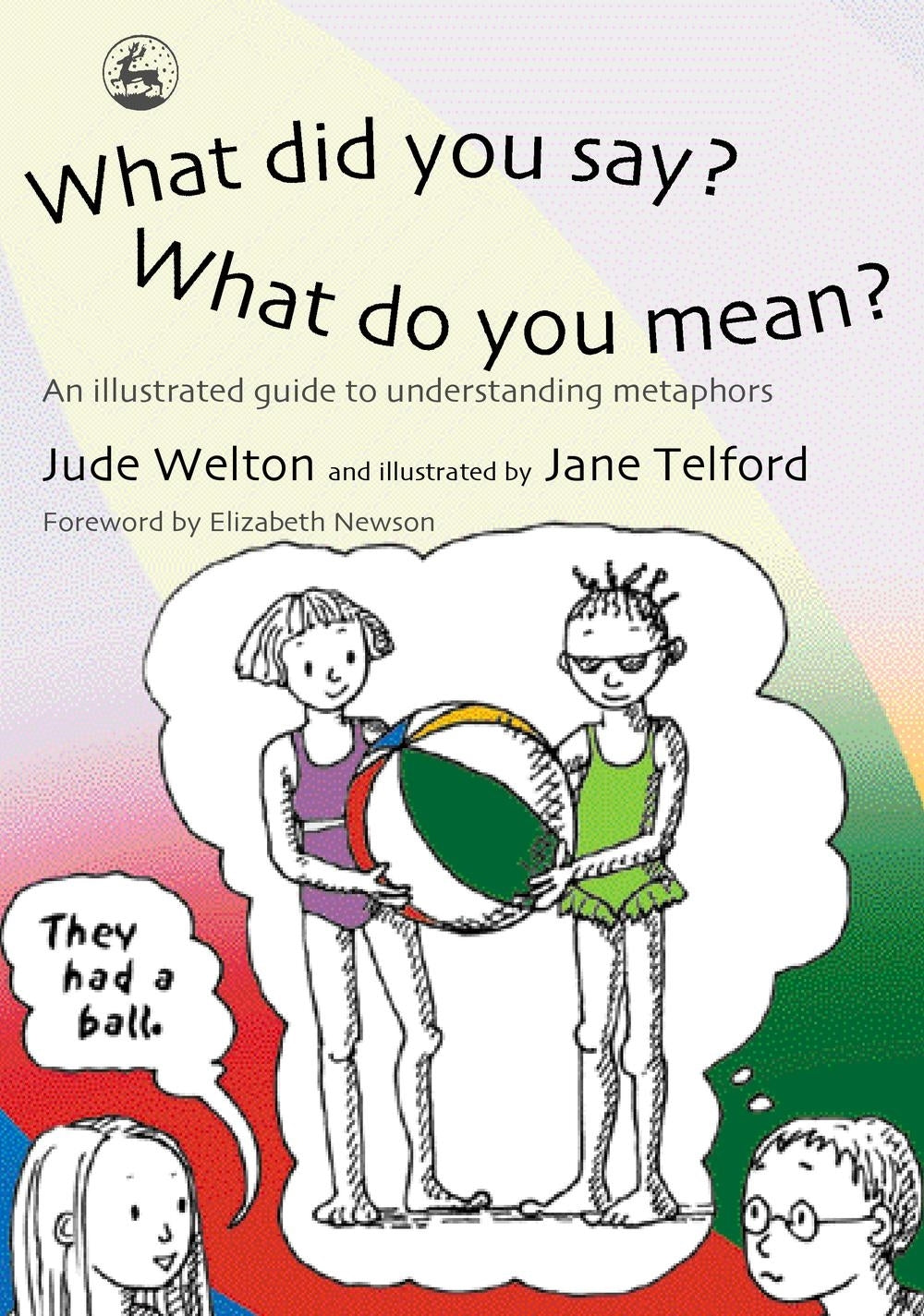
Press Reviews
Healthy Books
Most useful for children with high functioning autism, this book will be fun for almost any child wanting to know about metaphors. It's a funny old language, English, and almost anyone can "come a cropper" from not knowing the ins and outs of the use of idiomatic language. This book has explanations of 100 different metaphors, laid out in alphabetical order, and with wonderfully witty black and white illustrations... The pictures as seen by the non-understanding child are wonderfully funny and very logical. There are pages at the back of the book for the child to add his or her own metaphors, and there are two appendices for parents and teachers working with children with autism. An excellent resource for school and home.
Speech & Language Therapy in Practice
Both cards and guide are welcome additions to the limited resources available in this area.
Autiser
"What did you say?" by Jude Welton offers help in a light-hearted way to younger children who are confused by metaphors. She has provided explanations for 100 sayings and each one has a drawing to show the literal interpretation. This is a book for children to enjoy and have some fun with while learning about language and communication.
The Frontline of Learning Disability
With their use of simple language and a range of everyday images, the author and illustrator of this book achieve a pleasant balance in trying to explain a range of metaphors such as 'letting the cat out of the bag', or 'I heard it from the horse's mouth'. Having a child with AS who has a passionate interest in horse racing, I can really relate to the complications of saying, 'I heard it from the horse's mouth'. My son's response to such use of language would be saying, 'Did Fields of Joy (horse's name) really tell you he was going to win the race?'. This is a useful text which may have benefits in understanding everyday metaphors, not just for people with AS but for a wider readership. The book closes with some useful hints as to how the book could be used as an aid to learning.
Tess Russell, Brecon High School
This book is a great aid for pupils with ASD. Each metaphor is attractively accompanied by a simple cartoon-style drawing illustrating the literal meaning. Underneath is an explanation of the message that is intended to be conveyed, together with an example of its use. When it is known, the origin of the metaphor is included. For the pupil of ASD, knowledge of the origins gives such expressions a logicality and justification. I am sure this helps with remembering the context in which these expressions can be used. This book is excellent in that it is clear and unpretentious. It sets out to fill a need - an introduction to the world of metaphors- and it does just that'.
Practical Professional Child Care
Figures of speech can often cause confusion for young children - "they had a ball" doesn't necessarily conjure up the image of people having a good time. A new visual workbook, What did you say? What did you mean?, designed as a springboard for discussion, looks at 100 most common figures of speech. The accompanying illustration showing its literal meaning will help children recognise and learn to enjoy metaphors and figurative language.
from the Foreword, by Elizabeth Newson
Jude Welton has given us a truly helpful introduction into the world of metaphor. Any parent or teacher working with Asperger's will find it beginning to open the doors of imagination for the child in ways that they might not have thought possible. A lovely and practical book, which children and grownups can enjoy - and giggle over - together.
